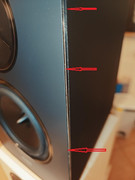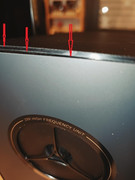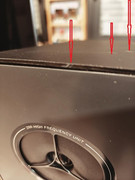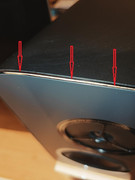No, but...
Look at the measurements in Amir's review again. They show an
on-axis dip, but it's only 3dB for a very narrow band, at c.1.75k, and maybe 2dB at c.2.75k. Everything else between 1.5k and 2.5k is 1dB off, maximum.
Now look at estimated in-room response, I'd say the difference is larger, but not a huge amount, with the worst dip at 1.75k being about -4dB.
If you use EQ to pull the whole area from 1.1k to 3k (centred on 2k) up a couple of dB or so, you should be getting extremely flat on-axis response, maybe just over +/-1dB, so that bit
is EQ-able. The extra 1-2dB from off axis can't be EQ'd, (to answer your question) but that still leaves you with FR flatter than many speakers costing 2, 3, or even 4 times as much.
And, of course, if you listen in the nearfield (as I do) the influences of the reflected sound diminishes even further. As well as largely sorting the relatively small FR issues, by sitting closer, you don't have to drive them as hard, which reduces distortion (look at the difference between distortion at 76dB and 86dB). Finally, if you use a sub (as you almost certainly will be doing), just look at that 76dB distortion graph, and remove the distortion below 80Hz. Not to mention that not sending 80Hz and below to the speaker will reduce distortion above that figure. Look at Erin's measurements
here for distortion with an 80Hz crossover. Note how that -8dB peak at 5k goes all the way down to -25dB.
Bottom line, if you sit close, and can use just a little EQ, these are superb. You then have a £220 speaker with FR c.+/- 1dB from 90Hz to 15kHz, and distortion below 0.5%.
What's not to like?



